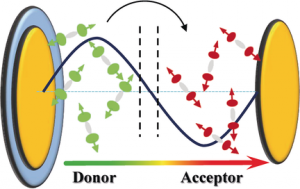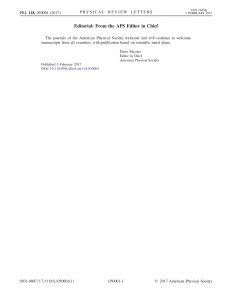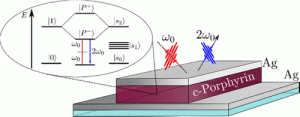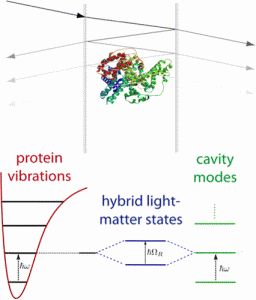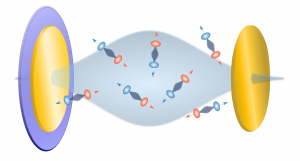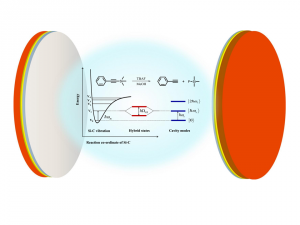Our last paper published recently in Angewandte Chemie, has been added to our Publications page. We showed direct evidence of non-radiative energy transfer neither of Förster nor of Dexter type, but due to the delocalized and entangled nature of the hybrid polaritonic states. We have measured energy transfer efficiency close to 37% for donor-acceptor distances over 100nm.
Category Archives: Publications
Second-Harmonic generation from hybrid states
We just published a new paper in Nano Letters, resulting from a collaboration with colleagues at IPCMS (Strasbourg), and Radboud University (Nijmegen), about second-harmonic generation boosted by hybrid light-matter states. This effect is induced by the modification of the nonlinear optical (NLO) susceptibility of organic nanofiber crystals placed into optical microcavities. As the system could be even further optimized, in particular by the use of other types of optical resonators, this opens the door to more efficient NLO organic devices. Please find the paper in our publications page !
A blog on our paper
Derek Lowe, publisher for Science Translational Medicine , has written a nice blog about our recent paper published in Angewandte Chemie, about ground-state chemical reactivity under vibrational strong-coupling. You can read the blog here, where you will also find links to other blogs about former results. And the paper itself is of course downloadable from the publications page of this site.
How to modify molecular and material properties
Thomas Ebbesen has written a report for Accounts of chemical research about the notion of hybrid light-matter states and the consequences of their existence on the molecular and material properties. This is an overview of the recent results in this emerging field of research where exciting possibilities remain to be explored. The paper can be downloaded from our publications page.
A step further towards biomolecular systems
A new publication, resulting from our collaboration with Vladimir Torbeev appeared yesterday in the Journal of Physical Chemistry Letters. This work makes a bridge between quantum electrodynamics and biology, by showing the possibility of modifying the vibrational modes of proteins via strong-coupling. It opens the door to more studies involving the proteins vibrational dynamics and for example, how it affects enzyme catalysis and H/D exchange experiments. You can find the paper here or download it from our publications page.
Ultra-strong vibrational coupling bis
The paper on ultra-strong vibrational coupling mentioned in our post from September 9 has been published today, in the last issue of Physical Review Letters. You can read the final version here or download it from our publications page.
Ultra-strong vibrational coupling
Here is a new paper accepted for publication in Physical Review Letters, where we demonstrate that a molecular vibration can be ultra-strongly coupled to multiple infra-red cavity modes, with Rabi splittings reaching 24% of the vibration frequencies. This effect induces a whole vibrational ladder of heavy polaritonic states perfectly resolved. The vibrational ultra-strong coupling regime, which impact both the optical and the molecular properties of the coupled systems, thus offers promising possibilities in particular in the context of mode-selective chemistry. For now, you can read our work on arXiv and also download it from our publications page.
Un peu de lecture, ça peut pas faire de mal *
A little improvement of our publications section has started today : you can now directly download the pdf versions of our most recent papers. We will progressively add the older ones in the coming weeks.
* a little bit of reading, that cannot hurt… title of a nice radio show on the french radio France Inter
Chemical reactivity modified by strong coupling
A fruitful collaboration between our group and Josef Moran team at ISIS revealed another very promising aspect of strong coupling : we proved indeed that one can modify a chemical reaction by strongly coupling a vibrational mode of the reactant. The reaction slows down significantly and the relative change in the reaction rate under strong coupling depends on the Rabi splitting energy.
The work had been published in Angewandte Chemie and you can read it here or download it from our publications page.

